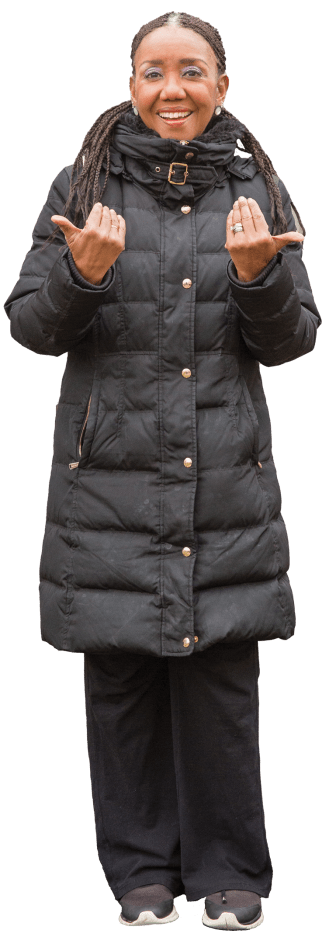Kathleen Taylor is an American Sign Language interpreter for the city Department of Education, providing interpreting services for students, staff and parents at meetings and events such as parent-teacher conferences and suspension hearings. She deals especially with mental health, social services and family issues because she has a background in those areas.
Tell me about your background and how you learned American Sign Language.
In my sophomore year of college, I became friends with the first Deaf student recruited at Hofstra University, and then in my junior year my godson — who’s 40 now — was diagnosed as being Deaf. I started taking ASL classes because I wanted to communicate with my godson. Then I got involved in the Deaf community in New York City in the 1990s, because the best way to learn is from the community itself. To become a certified ASL interpreter, I had to complete courses of study in the field of ASL interpreting and successfully pass a written and performance examination issued by the national governing body of sign language interpreters. When I started interpreting, I did a lot of music and theater because I wanted to show Deaf people the beauty of poetry and rhythm. Now I’ve just celebrated 16 years with the DOE.
What is the DOE’s Office of Sign Language Interpreting Services?
Twenty-three of us provide interpreting services for both staff and parents — everything from parent-teacher conferences to suspension hearings to teacher trainings. We all have subspecialties, because in the DOE there can be a lot of jargon that is unique, so we’re able to match people up based on their areas of strength. I do a lot of meetings associated with mental health, social services and family issues, because I worked for many years as a rehabilitation counselor and mental health therapist before I became an interpreter.
What does it mean to be certified as an interpreter?
As an interpreter, I’m taking someone else’s thoughts, switching them over to another language and delivering them — not at my pace but at someone else’s pace. I need to be able to hear the speaker, understand their point, change it over to another language and deliver it. There’s also an element of cultural mediation. If a hearing person says something implicit, I may need to interpret it to be explicit — because in the Deaf community, everything’s explicit. Hearing people love to speak on top of each other and cut each other off, whereas a Deaf person might be sitting there with a hand raised because in Deaf culture, you wait your turn. As an interpreter, I know and understand that.
How has working remotely changed the nature of your job?
Because we’re doing our jobs in the confines of a screen, I have to lift signs up higher from where I normally would. If I turn my head the wrong way, I’m out of view. I’m constantly self-monitoring to make sure I look a certain way. If I’m doing an assignment that lasts longer than 45 minutes, I have a partner and we switch off every 20 minutes or so, because it’s cognitively and physically exhausting. We might be on Zoom, but my partner and I also have to be connected on another platform so we can monitor each other in case one of us misses something.
How do you see your role as an interpreter?
I’m very conscious of the fact that every job I interpret affects someone’s life. I need to take care of both the hearing person and the Deaf person; I have a responsibility to both parties. If I leave an assignment and the person doesn’t remember my name or they say, “I forgot you were even there” — that’s the only time in my life I’m glad you forgot I was there, because it means the communication was so fluid that I did my job.
What I do not only provides access to the Deaf community so they can get the information they need to make educated decisions for their children, but it can change the perspective of hearing people. Just because someone is Deaf doesn’t mean they can’t express thought. You hear with your heart, especially when it comes to your child.
— As told to reporter Rachel Nobel
